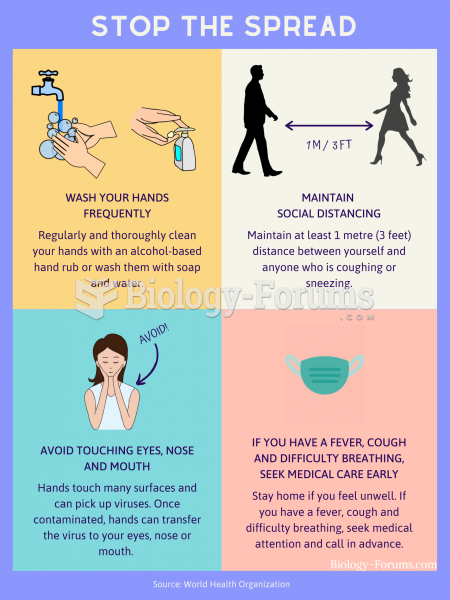|
|
|
When Gabriel Fahrenheit invented the first mercury thermometer, he called "zero degrees" the lowest temperature he was able to attain with a mixture of ice and salt. For the upper point of his scale, he used 96°, which he measured as normal human body temperature (we know it to be 98.6° today because of more accurate thermometers).
There are approximately 3 million unintended pregnancies in the United States each year.
The first oncogene was discovered in 1970 and was termed SRC (pronounced "SARK").
Adults are resistant to the bacterium that causes Botulism. These bacteria thrive in honey – therefore, honey should never be given to infants since their immune systems are not yet resistant.
More than 2,500 barbiturates have been synthesized. At the height of their popularity, about 50 were marketed for human use.







